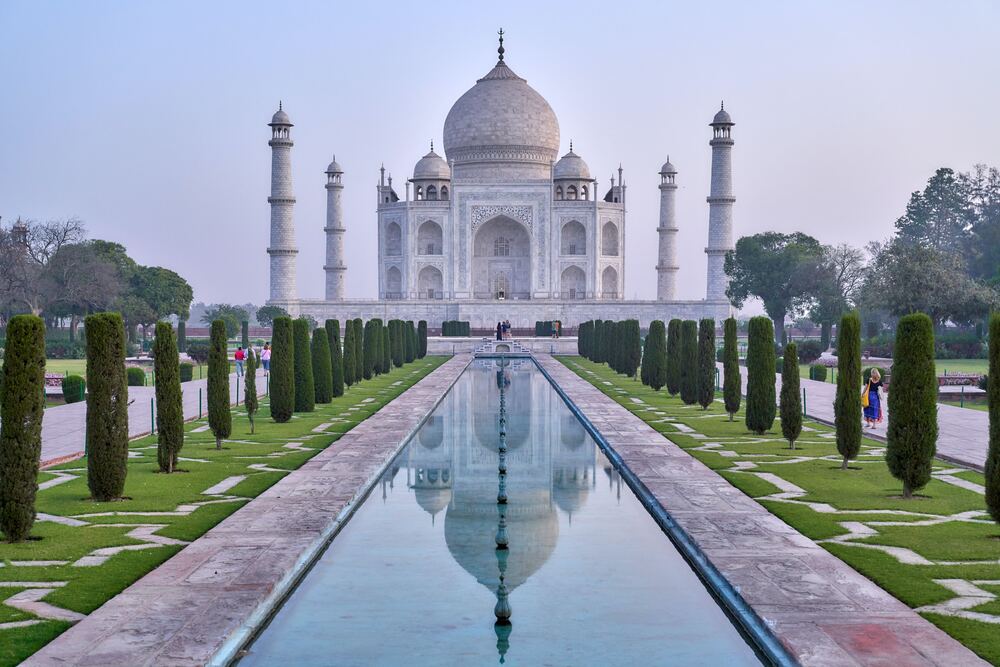Discovering India’s Diversity
My family resides in a town called Dombivli, neighbouring Mumbai, the financial capital of India. Nestled in the central-western part of the country, within the state of Maharashtra, this is where my journey into the vibrant world of Indian culture begins.
I’m genuinely excited to share my insights and personal experiences about the incredible tapestry of Indian culture, a realm that has captured the hearts of countless people around the globe.
India, my homeland, is made up of 28 states and 8 union territories, each painted with its unique hues of traditions and customs. India is also one of the oldest civilizations and countries across the globe. It’s a land which contributed to literature, science, astronomy, a place where the dynamic dance forms and a rich history of cinema — oftentimes an inspiration for Hollywood directors — create a sensational feast for all the senses. Here, ancient legacies blend seamlessly with modern influences, giving birth to a cultural kaleidoscope that’s ever-evolving.
In India, religion is like a symphony where different notes harmonize, creating a beautiful melody of diversity. You’ve got Hindus, Muslims, Christians, Sikhs, and more. This blend shapes the cultural values, often emphasizing respect, unity, and a deep belief that different paths can lead to the same destination. It’s like a warm hug, where everyone’s beliefs are honoured, and this sense of togetherness flows through the country’s veins.
Join me as we journey into the mesmerizing realm of Indian traditions, and uncover the vibrant hues, tantalizing flavours, and heartwarming festivities that make this country so distinct.
Allow me to confess, if I were to pick a country to be born in, India would still be my top choice (though, perhaps, not for passport power). Speaking of power, let’s talk about the unique cultural ethos that embraces our guests. As a foreign traveller in India, you’ll experience the embodiment of “Athithi Devo Bhava”, where our guests are treated as divine beings. Blend in with the locals, and you might just find yourself treated like a celebrity, showered with warmth and hospitality.
Now, while I’m all about celebrating the vibrancy of Indian culture, I’m also keen on discussing its challenges. From gender equality to social systems and environmental concerns, it’s through open dialogues that we can strive for a more inclusive society.
Now, onto things I absolutely adore:
Food: Let’s be real, I’m biased when I say Indian food is the bomb. From an outsider’s view, Indian cuisine often gets tagged as “spicy” and “flavourful,” and sometimes people lump Indian, Pakistani, and Bangladeshi food together. It’s a bit heartbreaking to hear that because while we do share historical roots, our culinary landscapes are vastly unique. With a mammoth cultural diversity, trying to define “Indian food” in a sentence is like trying to fit a galaxy in a matchbox. It’s too complex and varied, shaped by regions, states, religions, and more.
Our agriculture has been diverse for aeons, giving rise to one of the world’s most nutritious diets. The beauty is that whether you’re into non-veg, veg, or even vegan fare, India has a plate for you. If you’re just hopping on the vegan train, our cuisine, especially from the south, can be your delicious guide.
Quick story: An Italian friend asked me why we spice up our meat dishes so much. To him, it seemed like we were masking the taste of the meat. I get where he’s coming from; some cuisines are minimalistic in seasoning. But for us, spices enhance the meat’s flavour. Our spice-rich history makes our dishes a tantalizing blend of aromas and tastes.
Geography: India’s geography is a spectacle. It’s a magical mash-up of the mighty Himalayas, serene Ladakh, lush Southern hills, deserts, bustling cities, cascading waterfalls, winding rivers, beaches in Goa and Kerala, and the mesmerizing islands of Andaman and Nicobar. And this is just the tip of the geographical iceberg!
Festivals: Such a rich and diverse set of cultures gifts various festivals to be celebrated. Arguably the biggest is Diwali where the streets light up for almost ten straight days, people are joyous, culinary treats such as snacks and sweets are prepared and shared, and children enjoy bursting crackers and lighting fireworks. Many of the states have their New Year during these days. Some of them have it on other days. My favourite festival though is Onam, one of the festivals of Kerala, my parents’ home state. It is celebrated for almost ten days, but the final four are the most important. People buy new clothes and make new purchases for their homes during this time. Outside the homes are decorated with pookkalam, floral arrangements/colour sketches made of flowers. We prepare different mouth-watering delicacies called Sadhya, which is a full-course Kerala meal served on a banana leaf. The banana leaf for instance is quite traditional due to its nutritious benefits and the abundance of banana plantations in the state for a long time.
Cultural Significance: Banana leaves are tied to traditions and rituals in Kerala. They’re all about auspicious occasions and using them for meals is like a nod to our heritage.
Eco-Friendly: Going green, quite literally. Eating on a banana leaf is one of the most eco-friendly, discardable food serving arrangements.
Enhanced Flavour: The leaves infuse a unique flavour, enhancing the meal’s taste. It’s like a natural seasoning.
Health Boost: Believe it or not, banana leaves are thought to have antimicrobial properties. Hot food on leaves might just help zap those pesky bacteria.
Practicality: They’re spacious and perfect for arranging an assortment of dishes without everything mixing up.
Traditional Cooking: Some food is cooked or steamed in banana leaves. It imparts a distinct aroma and taste. Think of it as our unique version of a slow cooker.
Sports: India has a lot of talented athletes and is ever-growing. Everybody knows about the Indian Cricket team being one of the best. However, there is also a huge football following in the country. It is developing. Also, we have many more athletes trying for the Olympics and are making us proud with more medals in each event. With the potential that we have, I hope more facilities open up and the government helps make it easier for people to follow sports. Additionally, the families should motivate their children rather than discouraging them.
Challenges and Room for Improvement:
Politics
I will sound like a broken record as I believe most people in almost all the countries have their own issues with their government. I am not into politics; however, I follow the general public affairs. India is a parliamentary republic with a multi-party system. I could imagine how complicated it is to govern the biggest democracy in the world as we have both central governments and the state levels. I am sure that throughout the years, various governments have contributed to helping India become one of the biggest developing countries at a fast pace.
However, there is a lot of exploitation at many levels and the politicians take advantage of people’s beliefs to manipulate their campaigns and create hate. People are affiliated to specific parties but they move their beliefs according to what their party supports or stands for rather than what is right. This has created a lot of issues throughout the country. I believe that it can change since many of the population are getting educated and if each one of us takes a stand, this can improve.
Multiculturalism
India is also labelled a subcontinent because of the different states and respective cultures that exist. The people are strongly attached to their culture and quite proud of where they come from. However, this can both be a blessing and a curse. I identify myself as an Indian rather than from a specific state but there are many people who extremely identify themselves with their state. I understand and totally respect that. But this has created a lot of tension among the people in terms of language, religion, food, traditions, etc. An example is that the people in the North criticise the people from the South for not speaking enough Hindi as they are more conservative in terms of their language. Another problem is people from some states would like to separate from the whole country. There has been a growing tension between religious groups over issues for hundreds of years and many issues have been unnecessarily escalated. I hope people realise when they are being manipulated and sometimes used as part of a larger propaganda. If we unite, and train ourselves on emotional and cultural intelligence, then we can really thrive as an individual and make India one of the best countries in the world eventually setting an example.
Economy
India recently became the fifth biggest economy in the world over taking the UK and according to the International Monetary Fund, it is projected to become the third biggest by 2027. However, we also became the most populated country in the world. Our citizens were so happy about this, and I understand due to the history, the emotions were quite high. But I believe if you consider on a micro level and compare the per capita income, there is a huge disparity between the top income levels and the ones below them. The gap keeps on increasing.
So, there you have it: a glimpse into India’s vibrant culture, a tapestry of traditions, challenges, flavours, and colours!
Thanks for joining me on this journey. Let’s embrace the complexities and charm that make India what it is. It’s a land where every corner whispers a story, every dish tells a tale, and every festival paints a picture of unity in diversity. Together, let’s celebrate, acknowledging its strengths and striving to overcome its challenges, creating a better tomorrow for all.



